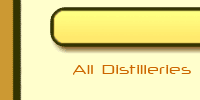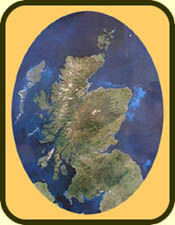Speyburn distillery
Speyburn Scotch Whisky
Speyburn (Pronounced: Just like it's written)
Speyside (Rothes)
57°31'59.48"N, 3°13'13.21"W
Glenrothes, Glen Grant, Caperdonich, Glen Spey
1897
Active
Birchfield Burn (in the past: Granty Burn)
1 Wash still, 1 Spirit still
2,000,000 litres of pure alcohol per year
Inver House (since 1991)
Rothes, Aberlour, Banffshire, AB38 7AG, Scotland, UK
+441340 831213
No
www.speyburn.com
Yes; with a strong focus on their 10yo OB.
Below, on WhiskyFun and on the Malt Maniacs Monitor
Name:
Region:
GPS location:
Neighbours:
Founded:
Status:
Water source:
Equipment:
Production capacity:
Ownership:
Address:
Telephone number:
Visitor centre:
Website:
Official bottlings:
Scores & tasting notes:
Speyburn whisky

2001 - Inver House is obtained by Pacific Spirits (a subsidiary of the Asian Great Oriole Group).
2006 - Pacafic Spirits UK is taken over by
International Beverage Holdings.
2008 - A new stainless steel mash tun replaces the old cast iron mash tun.

Like many other distilleries in Scotland, Speyburn was designed by
Charles Doig. The required investment was 17,000 pounds
- a modest
price for a distillery on a prime location (it's located in the Rothes Glen)
that was equipped with the latest innovations. For example, Speyburn
was the first distillery in Scotland with a drum maltings. Neighbouring
Glen Grant distillery and Saint Magdalene (Lowlands) soon followed.
The Speyburn distillery
started production in 1897 - but only barely...
The proprietors were keen to start the distillation in the year of Queen
Victoria's diamond jubilee, but they almost didn't make it. Production
was scheduled to start on November 1, but the owners didn't manage
to get the stills running before the middle of December of that year.


The company behind the launch of Speyburn in 1897 was John Hopkins & Co. - an enterprise of the brothers John and Edward Hopkins and their nephew Edward Broughton. Speyburn wasn't their first distillery; in 1890 they had already acquired the Tobermory distillery on the island Mull. In 1916 DCL (Distillers Company Limited) acquired the company and its distilleries. Like many other Scottish whisky distilleries Speyburn didn't produce whisky during part of the first World War. After peace broke out production was resumed, but in 1930 production was ceased again - this time until 1934. Then WWII caused another pause in the production of malt whisky, but after the end of the second world war production at Speyburn continued uninterrupted until the present day.
Speyburn was transferred to SMD (Scottish Malt Distillers, a predecessor of Diageo) in 1962 and
the drum maltings at the distillery - once a novelty in the whisky industry - were closed six years
later. Inver House Distillers bought Speyburn in 1991 or 1992, three years after they bought
Knockdhu and half a decade before they bought Balblair, Balmenach and Old Pulteney. Inver
House were themselves taken over by Pacific Spirits from the Great Oriole Group from Asia.
The
10 years old official bottling depicted at the left was the primary expression for many years.
According to the Malt Whisky Yearbook 2006 only some 10,000 bottles of the Speyburn single
malt were sold annually in the
UK, but a far greater number was shipped to the U.S.A. each year;
a whopping 350,000 bottles. At the time Speyburn was amongst the biggest selling single malt
whiskies in the USA - it was in the top 10. With a measly
10,000 bottles it's definitely not in the top
ten in the United Kingdom, and if the situation in Holland is anything to go by it's a fairly obscure
brand in Europe as well. The good news is that it's an affordable dram;
during the 1990's there
were many good alternatives for a few more Euro's, but these days not so much anymore...

Speyburn distillery has a traditional rake
mash tun that holds 25,000 litres of wort.
They use Douglas Fir wash backs and the
still room houses a single pair of stills, just
like when
the distillery was built. Alcohol
vapours are condensed with more than
a hundred meters of copper pipe in
the traditional cold water worm tubs.
Well over
half of the Speyburn malt
whisky is transported away to be filled at
the Airdrie headquarters
of Inver House.
The remaining spirit is filled into cask and
stored in one of the two warehouses at
the distillery.
Speyburn is the only distillery to use the
particularly soft Speyside water from the
Granty Burn
- depicted at the right - for
the production of its malt whisky. The
Granty Burn that supplies Speyburn with
its water is one of the major tributaries
to the River Spey.

1) Some locals still refer to the distillery as 'The Gibbet' because of its location near the ancient 'Cnock na Croiche' or 'Hill of the Gibbet'. The word 'gibbet' was originally synonymous with gallows, but in later use could also mean an upright post with a projecting arm from which the bodies of criminals were hung in chains or irons after execution.
2) One of the reasons for the installation of the drum maltings (a mechanical, steam-driven malting system with rotating cylinders) in 1897 was the relatively compact design - less space was necessary than conventional floor maltings. Most of the other buildings were built to make the best use of the available space as well - there are quite a few slopes in the surroundings of Speyburn distillery. Charles Doig designed the distillery based on height instead of surface. For example, the cask warehouses occupy 2 or 3 levels. The entire Speyburn distillery (which had an annual capacity of 100,000 Gallons of alcohol at the time it was built) occupies no more than three acres.
3) The proprietors were in a rush to get distillation started; they wanted the first fillings to bear 1897 - the year of Queen Victoria's Diamond Jubilee . They had scheduled production to start on 1 November 1897 but it seems that even in those days the estimates of contractors were overly enthusiastic; the stills were heated for the first time on 15 December 1897 amidst a snow storm. The owners were so eager to get the production started that they began distillation even though the doors and windows of the still house were not even installed yet. Despite the harsh conditions the workers managed to fill at least one butt of Speyburn single malt whisky during the year of Queen Victoria's Diamond Jubilee. (Maybe more whisky was produced, but just one cask was bonded.)
4) Speyburn is sometimes described as the most photographed distillery in Scotland.
I'm not quite sure if and how this is measured though...
5) Most of the Speyburn malt whisky that is produced is used for blends.
6) The first manager of Speyburn distillery was one Mr. John Smith. He managed to hang on to the job for 31 years.
7) In 1962 Speyburn's two stills were both converted to internal heating by steam (from a coal-fired boiler).
8) Between 1939 to 1947 the Speyburn distillery was temporarily closed when it was used to house two Scottish Artillery regiments during the second world war.
Speyburn 10yo (40%, OB, Bottled +/- 2010)
Nose: Light and very slightly fruity start. Hint of something 'veggy' as well. The fruit vanishes over time.
Taste: Soft start. Malt. Medium sweet. The style somehow reminds me of the current Scapa 16yo. Bitter finish.
Score: 74 points - I'm not quite as impressed as I was with a batch from +/- two years ago. Too bad..
Speyburn 10yo (40%, OB, Bottled +/- 2008)
Nose: Light but solid. Melon and 'Rang' citrus sweets. Grows more lemony and expressive after a few seconds.
A perfect summer whisky; not particularly complex, but you can keep drinking it all night.
Taste: Watery start, quickly powering up. Very smooth; solid sweet centre.
Loses steam after a few minutes, though, pulling it out of the lower 80's.
Score: 78 points - with so many brands losing some of their charm, it's nice to see Speyburn on the rise.
Speyburn 21yo (43%, OB, Bottled +/- 2002)
Nose: Mellow with soft early fruits; apples and pears. Melon? Maybe a hint of smoke?
That's entertaining - now I get more 'autumn' notes and even the faintest hint of peat!
Taste: Sweet and quite solid. Malty. Drinks away very easily, but could do with more body.
Score: 78 points
- a very decent malt whisky, but it could do with just a little more personality.
Speyburn 21yo 1979/2002 (60.2%, OB, Cask #422)
Nose: Starts out very restrained. Sandy. Turns veggier - sake and string beans. But it changes...
This is one of those malts that really needs its time - at least fifteen minutes. It keeps developing.
Taste: Bourbony. This one doesn't quite live up to its promise on the palate - like many other malts.
Score:
84 points - making it the best Speyburn whisky I've tried so far. But it needs some time.
Speyburn 10yo 1990/2000 (50%, DL OMC, Distilled 01/1990, Bottled 07/2000, 450 Btl.)
Nose: this was was fresh and spunky. light with a touch of eucalyptus. Hint of peat? Salmiak. Sulphur.
Just a little oil, perhaps? Nectar later on - like honeysuckle. The nose would warrant a score in the 80's.
Lots of development in the nose of this Speyburn, ending on a very pleasant 'organic' note.
Taste: Unfortunately it didn't quite come through on the palate. Smooth, sweet and solid.
A hint a hint of yellow plums. Not special enough to reach the 80's, but it gets very nearly there.
Score: 79 points
- not bad at all considering this is a relatively young bottling; a very nice summer malt, I'd say.
Speyburn 10yo (40%, OB, Bottled +/- 1995, 70cl)
Nose: Shows just a hint of sherry. Some smokiness, combined with sweets as well.
This affordable single malt whisky has a promising bouquet; perhaps a tad too friendly.
Taste: The palate isn't very complex, but quite nice. Malty with a fresher, bitter finish.
A soft sweetness; easy on the tongue. A bit lacking in character, though.
Score: 69 points - but that was at a time when I still mostly drank Macallan and Lagavulin...
And there's more to tell about Speyburn...
These were not all (official & independent) bottlings of Speyburn Scotch whisky I've tried over the years.
Besides, these tasting notes only reflect my own, personal opinion; your tastes might be different from mine.
Fortunately, you can find the scores and tasting notes from up to two dozen other whisky lovers in the 'Malt Maniacs
Monitor' - an independent whisky database with details on more than 15,000 different whiskies from Scotland and the rest of the world. Visit the Speyburn page on the MMMonitor and select 'scorecard view' if you want to know how
other whisky lovers felt about the dozens of Speyburn expressions that were released in recent years. However, if you'd like to learn more about whisky in general (and single malt Scotch whisky
in particular), you might want to check out the Beginner's Guide to Scotch whisky (10 chapters filled with everything you need to fully enjoy and
appreciate a glass of single malt whisky) or the mAlmanac (sort of a rudimentary whisky shopping guide.)



|
|
|
|
|
DD Overview |
|
|
|






